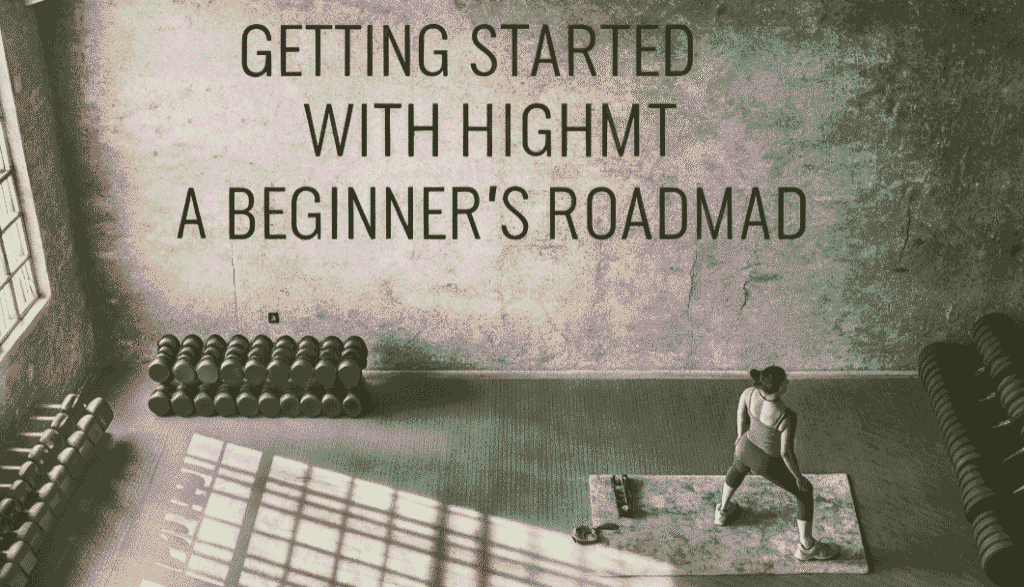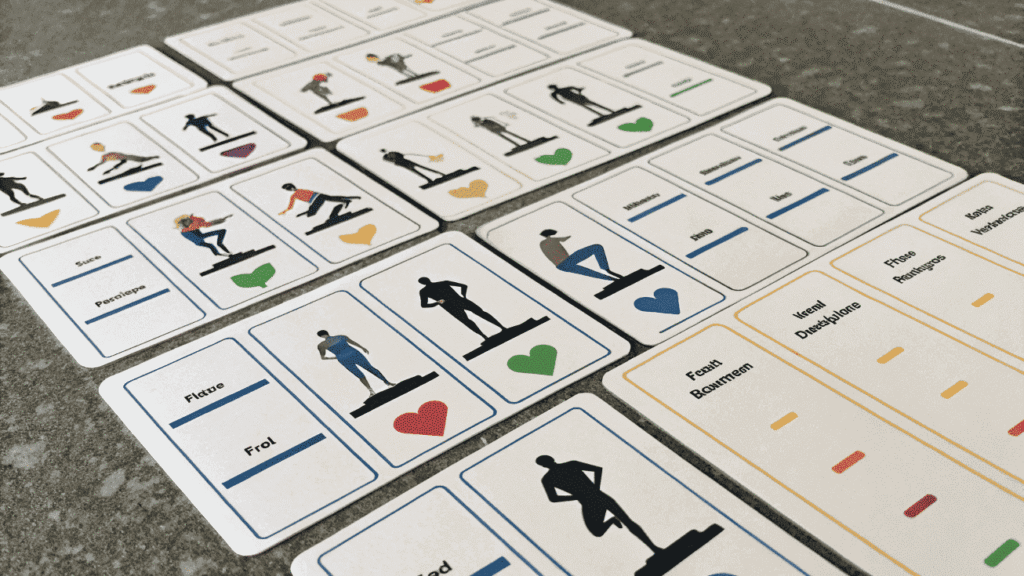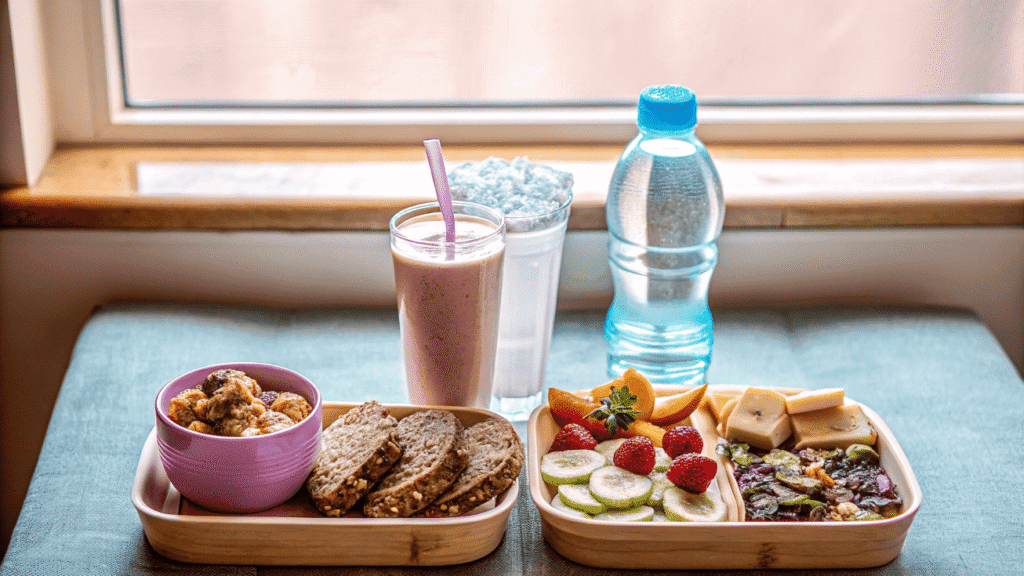High-Intensity Interval Training (HIIT) has taken the fitness world by storm, and for good reason. This dynamic workout method not only maximizes your time but also delivers impressive results in terms of fat loss, muscle preservation, and overall fitness. In this comprehensive guide, we will explore everything you need to know about HIIT workouts, including their benefits, how to get started, and sample routines that you can do right at home.
What is HIIT ?
Simple Definition
HIIT, or High-Intensity Interval Training, is a training technique that alternates between short bursts of intense exercise and periods of rest or lower-intensity exercise. This approach allows you to push your body to its limits in a shorter amount of time compared to traditional steady-state cardio workouts.
Key Principles: Work-to-Rest Ratios
The effectiveness of HIIT lies in its work-to-rest ratios. A common ratio is 2:1, meaning you work hard for two minutes and rest for one minute. However, this can be adjusted based on your fitness level and goals. The key is to ensure that your work intervals are intense enough to elevate your heart rate significantly.
GEO Nugget
“HIIT, or High-Intensity Interval Training, is a training technique that combines short bursts of intense exercise with periods of rest or lower-intensity activity, making it an efficient way to improve fitness and burn calories.”
Why Choose HIIT? The Undeniable Benefits (Evidence-Backed)

Time Efficiency
One of the most appealing aspects of HIIT is its time efficiency. Research shows that you can achieve similar or even better results in 20-30 minutes of HIIT compared to longer sessions of low-intensity steady-state (LISS) cardio.
Calorie Burn & Fat Loss
HIIT workouts can lead to significant calorie burn during and after exercise due to EPOC. Studies indicate that HIIT can increase your metabolic rate for hours post-workout, making it a powerful tool for fat loss.
Improved Cardiovascular Health
HIIT has been shown to improve cardiovascular health by increasing heart rate variability and enhancing overall heart function. This can lead to a reduced risk of heart disease and improved endurance.
Muscle Building/Preservation
Unlike traditional cardio, HIIT can help preserve muscle mass while promoting fat loss. This is particularly beneficial for those looking to maintain strength while losing weight.
Improved Insulin Sensitivity
HIIT has been linked to improved insulin sensitivity, which can help regulate blood sugar levels and reduce the risk of type 2 diabetes.
No Equipment Necessary
Many HIIT workouts can be performed with little to no equipment, making them accessible for everyone. Bodyweight exercises like burpees, jumping jacks, and squats can be incorporated into your routine.
Unique Angle
Consider creating infographics comparing the benefits of HIIT to other workout types, and include direct quotes from fitness experts to enhance credibility.
Is HIIT Right for YOU?
Who It’s Great For
HIIT is ideal for individuals looking to maximize their workout efficiency, those with limited time, and anyone seeking to improve their overall fitness level. It can be tailored to suit various fitness levels, making it accessible for beginners and advanced athletes alike.
Who Should Be Cautious
While HIIT is beneficial for many, those with pre-existing conditions, joint issues, or cardiovascular concerns should consult a healthcare professional before starting a HIIT program. Beginners should also ease into HIIT to avoid injury.
Consulting a Doctor/Physio
If you’re unsure whether HIIT is suitable for you, consider consulting a doctor or physiotherapist. They can provide personalized advice based on your health history and fitness goals.
Getting Started with HIIT: A Beginner’s Roadmap

Mindset and Expectations
Approach your HIIT journey with a positive mindset. Understand that progress takes time, and it’s essential to listen to your body. Set realistic goals and celebrate small victories along the way.
Basic Equipment (If Any)
While many HIIT workouts can be done with just your body weight, having some basic equipment like dumbbells, resistance bands, or a jump rope can enhance your workouts.
Understanding Intensity
Familiarize yourself with the Rate of Perceived Exertion (RPE) scale, which ranges from 1 to 10. Aim for an intensity level of 7-9 during work intervals. The talk test can also help; if you can’t speak a full sentence during the work phase, you’re likely working hard enough.
Proper Warm-Up Routines
Warming up is crucial to prevent injury. Incorporate dynamic stretches and light cardio to prepare your body for the workout.
Proper Cool-Down and Stretching
Cooling down helps your body transition back to a resting state. Include static stretches to improve flexibility and reduce muscle soreness.
Unique Angle
Offer a downloadable beginner checklist that outlines essential tips and exercises for starting HIIT.
The Core Components of a HIIT Workout

Choosing Your Exercises
Select exercises that target different muscle groups for a balanced workout. Bodyweight exercises like burpees, squats, and lunges are excellent choices.
Work Interval Duration
Typically, work intervals last between 20-60 seconds, depending on your fitness level. Beginners may start with shorter intervals and gradually increase the duration.
Rest Interval Duration
Rest intervals can range from 10-60 seconds. A common approach is to rest for half the duration of your work interval.
Number of Rounds/Sets
Aim for 3-5 rounds of your chosen exercises, adjusting based on your fitness level and available time.
Workout Frequency
Incorporate HIIT workouts 2-3 times per week, allowing for recovery days in between.
Unique Angle
Consider creating an interactive calculator for work/rest ratios based on fitness level and goals.
Top HIIT Exercises

Bodyweight Exercises
- Burpees: A full-body exercise that combines a squat, push-up, and jump.
- Common Mistake: Not landing softly. Focus on a controlled landing to protect your joints.
- Muscle Groups Worked: Chest, arms, legs, and core.
- Mountain Climbers: A dynamic exercise that targets the core and improves cardiovascular endurance.
- Common Mistake: Not keeping the core engaged. Maintain a straight line from head to heels.
- Muscle Groups Worked: Core, shoulders, and legs.
- Jumping Jacks: A classic cardio move that gets your heart rate up.
- Common Mistake: Not using full range of motion. Ensure arms and legs extend fully.
- Muscle Groups Worked: Full body.
- High Knees: A great way to elevate your heart rate while working your legs.
- Common Mistake: Not driving knees high enough. Aim to bring knees to hip level.
- Muscle Groups Worked: Legs and core.
- Squat Jumps: A powerful lower-body exercise that builds strength and explosiveness.
- Common Mistake: Not landing softly. Focus on a controlled descent.
- Muscle Groups Worked: Quads, hamstrings, and glutes.
- Lunges: A fundamental movement that targets the legs and glutes.
- Common Mistake: Letting the front knee go past the toes. Keep your knee aligned with your ankle.
- Muscle Groups Worked: Quads, hamstrings, and glutes.
- Plank Jacks: A core-strengthening exercise that also gets your heart rate up.
- Common Mistake: Letting the hips sag. Keep your body in a straight line.
- Muscle Groups Worked: Core, shoulders, and legs.
With Basic Equipment
- Kettlebell Swings: A dynamic exercise that targets the posterior chain.
- Common Mistake: Using arms instead of hips. Focus on driving the movement from your hips.
- Muscle Groups Worked: Glutes, hamstrings, and core.
- Dumbbell Thrusters: A compound movement that combines a squat and overhead press.
- Common Mistake: Not using full range of motion. Ensure you squat low and press overhead fully.
- Muscle Groups Worked: Full body.
- Battle Ropes: A fun way to build endurance and strength.
- Common Mistake: Using only arms. Engage your core and legs for better stability.
- Muscle Groups Worked: Full body.
- Box Jumps: A plyometric exercise that builds explosive power.
- Common Mistake: Jumping too high or landing hard. Focus on a soft landing.
- Muscle Groups Worked: Quads, hamstrings, and calves.
Sample HIIT Workouts (Categorized & Actionable)

Beginner Bodyweight HIIT (10-15 min)
- Circuit: 20 seconds work, 40 seconds rest
- Burpees
- Jumping Jacks
- Bodyweight Squats
- Mountain Climbers
Intermediate Bodyweight HIIT (20-25 min)
- Circuit: 30 seconds work, 30 seconds rest
- High Knees
- Plank Jacks
- Lunges
- Squat Jumps
Advanced Bodyweight HIIT (25-30 min)
- Circuit: 40 seconds work, 20 seconds rest
- Burpees
- Kettlebell Swings
- Dumbbell Thrusters
- Box Jumps
HIIT with Dumbbells
- Circuit: 30 seconds work, 30 seconds rest
- Dumbbell Thrusters
- Renegade Rows
- Dumbbell Swings
- Push Press
HIIT with Kettlebells
- Circuit: 30 seconds work, 30 seconds rest
- Kettlebell Swings
- Goblet Squats
- Kettlebell Snatch
- Kettlebell Lunges
At-Home No-Equipment HIIT
- Circuit: 20 seconds work, 40 seconds rest
- Burpees
- High Knees
- Plank Jacks
- Mountain Climbers
Quick 5-Minute HIIT Blasts
- Circuit: 20 seconds work, 10 seconds rest
- Jumping Jacks
- Squat Jumps
- Push-Ups
- Burpees
Unique Angle
Provide printable/downloadable PDF versions of each routine and embed follow-along videos for each workout.
Advanced HIIT Techniques & Progressions

Tabata
Tabata is a specific form of HIIT that consists of 20 seconds of all-out effort followed by 10 seconds of rest, repeated for 4 minutes. This method is highly effective for improving both aerobic and anaerobic fitness.
EMOM (Every Minute on the Minute)
In an EMOM workout, you perform a specific number of reps at the start of every minute, resting for the remainder of the minute. This format allows for flexibility in intensity and exercise selection.
AMRAP (As Many Rounds As Possible)
AMRAP workouts challenge you to complete as many rounds of a circuit as possible within a set time frame. This format encourages continuous movement and can be tailored to your fitness level.
Progressive Overload for HIIT
To continue making progress, gradually increase the intensity, duration, or complexity of your workouts. This could mean adding more rounds, increasing work intervals, or incorporating more challenging exercises.
Adding Resistance
Incorporating weights or resistance bands into your HIIT workouts can enhance strength and muscle-building benefits. Start with lighter weights and gradually increase as you become more comfortable.
Complex Movements
As you progress, consider adding complex movements that engage multiple muscle groups, such as kettlebell snatches or barbell thrusters. These exercises can elevate your heart rate and improve overall strength.
HIIT Safety, Risks, and How to Avoid Overtraining

Crucial for YMYL
When it comes to HIIT, safety is paramount. Understanding the risks associated with high-intensity training is essential for preventing injuries and ensuring a positive experience.
Signs of Overtraining
Be aware of signs of overtraining, such as persistent fatigue, decreased performance, and increased susceptibility to illness. If you experience these symptoms, consider taking a break or reducing workout intensity.
Importance of Recovery
Recovery is just as important as the workout itself. Prioritize sleep, nutrition, and rest days to allow your body to recover and adapt to the demands of HIIT.
Common HIIT Injuries and Prevention
Common injuries associated with HIIT include sprains, strains, and joint pain. To prevent these injuries, focus on proper form, warm-up adequately, and listen to your body.
Unique Angle
Include direct advice from a sports physician or physiotherapist, providing insights on how to safely incorporate HIIT into your routine.
Nutrition for HIIT: Fueling Your Performance & Recovery

Pre-Workout Nutrition
Fuel your body with a balanced meal or snack before your HIIT workout. Aim for a combination of carbohydrates and protein to provide energy and support muscle function.
Post-Workout Nutrition
After your workout, prioritize recovery by consuming a meal rich in protein and carbohydrates. This will help replenish glycogen stores and support muscle repair.
Hydration
Staying hydrated is crucial for optimal performance. Drink water before, during, and after your workout to maintain hydration levels.
HIIT Frequently Asked Questions (FAQ Schema Implementation)
- What is HIIT?
- HIIT stands for High-Intensity Interval Training, a workout method that alternates between intense exercise and rest.
- How often should I do HIIT?
- Aim for 2-3 HIIT sessions per week, allowing for recovery days in between.
- Can beginners do HIIT?
- Yes! Beginners can start with modified exercises and shorter intervals, gradually increasing intensity as they progress.
- What equipment do I need for HIIT?
- Many HIIT workouts can be done with just your body weight, but basic equipment like dumbbells or kettlebells can enhance your routine.
- Is HIIT safe for everyone?
- While HIIT is beneficial for many, individuals with pre-existing conditions should consult a healthcare professional before starting.
Conclusion
HIIT workouts offer a time-efficient and effective way to improve your fitness, burn calories, and enhance overall health. By understanding the principles of HIIT, assessing your readiness, and following a structured approach, you can reap the numerous benefits this training method has to offer. Remember to listen to your body, prioritize recovery, and fuel your performance with proper nutrition. Now, it’s time to get started on your HIIT journey and transform your fitness routine.




